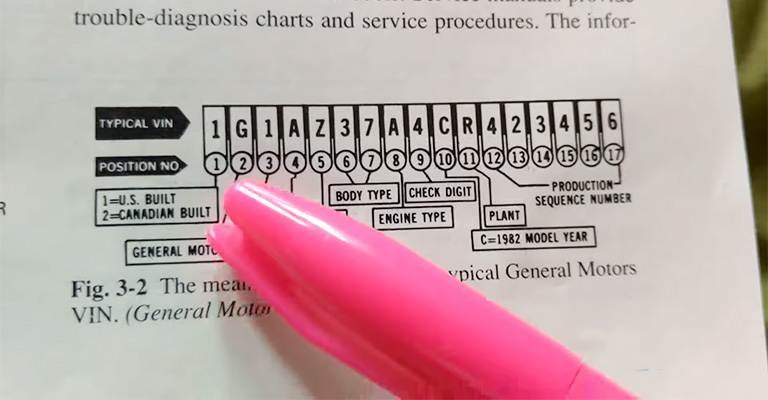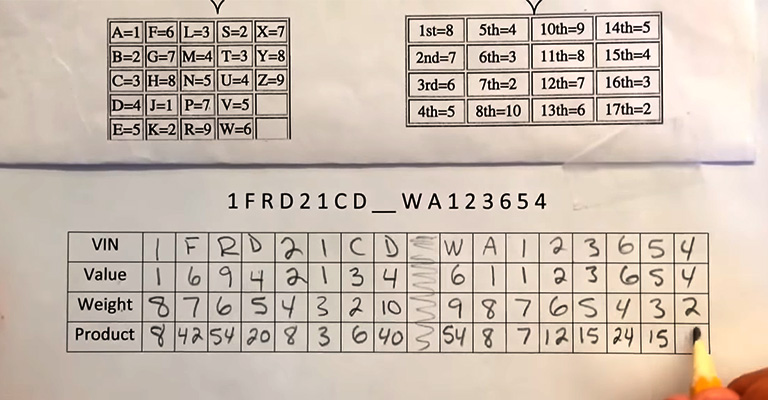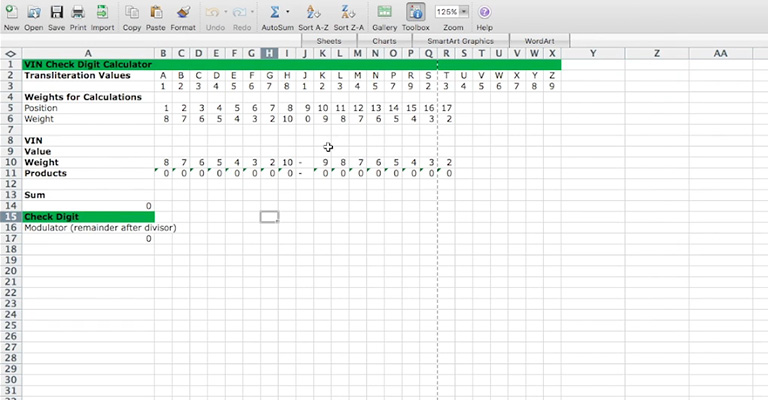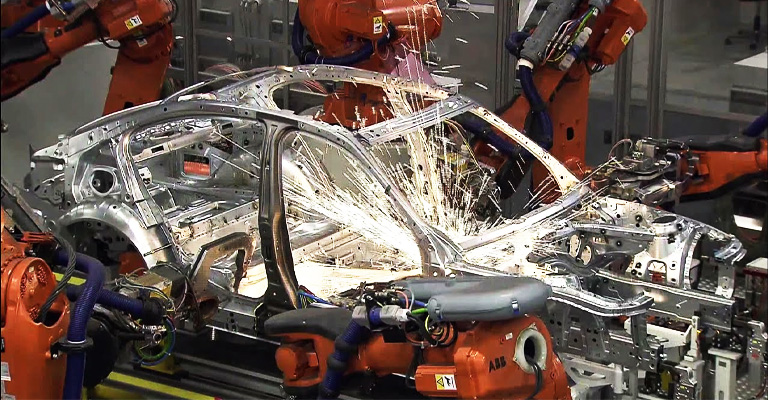Do you ever wonder what the complicated 17-character code on a Honda automobile represents?
The unique code is called the VIN (Vehicle Identification Number) number of your Honda automobile, and it represents all the essential pieces of information about your vehicle.
Now, the question is, “How do you decode a Honda VIN number?”
The code consists of a lot of numbers and letters, and throughout this blog, we’ll help you to break down what those characters mean. So, binge on till the very end of this blog.

What is a VIN Number?
VIN is the acronym for Vehicle Identification Number. This number and letter combination provides specific information about your vehicle.
Your car’s VIN number will tell you where it was made, who manufactured it, the brand, engine size, year, and what plant assembled it, among other things! You will learn how to decode your own VIN number in this article.
What Does a Honda VIN Number Look Like?
A VIN number might look something like this: “SHHFK8G31JU301140”. This unique code represents a Honda Civic Type-R 2018 White 2.0L 4.
You may wonder how we came to know about the car’s model number and specifications from a puzzling piece of characters.
How to Decode/ Read Your VIN Number?
We are going to tell you exactly how you can also do it by a breakdown of all the 17 characters of a VIN code. This way, you can also decode the VIN of your Honda automobile.
Breakdown of the VIN Number

As previously mentioned, there are 17 characters containing a range of numbers and letters, each representing essential information about your vehicle.
Here is what each of the characters represents:
- Character 1 (Country of origin)
- Character 2 (Manufacturer of the car)
- Character 3 (Division of manufacture)
- Characters 4, 5, and 6 (Type of chassis or body of the car)
- Character 7 (Transmission type of the car)
- Character 8 (Modification of the car)
- Character 9 (Check for the accuracy of the VIN number)
- Character 10 (Model year of the car)
- Character 11 (Assembly plant of the car)
- Characters 12 through 17 (Serial number of the car)
This is the breakdown of what each of the characters represents. In the next section of the article, we will let you know the details of all the characters in a VIN number.
Details of Each of The Characters of a VIN Number

The first three characters of the VIN number usually stand for WMI. This WMI is the abbreviation for World Manufacturer Identifier.
Character 1: Country of Origin
This very first character of the VIN number represents where the car was actually made. It usually specifies the continent or country of manufacture. Letters and numbers can both be used to be the first character of the VIN.
Each of the characters represents a different country or part of the world.
Here is what each of the characters represents:
- “A” through “H” means the car was made in Africa.
- “J” through “R” means the car was made in Asia.
- “S” through “Z” means the manufacturing process was made in Europe.
- “1” to “5” means the vehicles were made in North America.
- “6” and “7” means they were made in Oceania.
- “8” and “9” means the automobiles were made in South America.
Character 2: Manufacturer of the Car

This character represents the car manufacturer and in which country your Honda vehicle was made.
For instance, it’s commonly known that Honda automobiles are made in Japan, but it is not entirely true.
Many Honda and other Japanese car manufacturers make their cars in various parts of the world, like Mexico and the United States.
Character 3: Division of Manufacture
Division of Manufacture means in what type of division the car was made and what vehicle is manufactured. For example, a 4-wheeler Honda vehicle is manufactured in a specific region of Mexico.
There are different types of four-wheelers. A car, truck, bus, and so on, and this is what the 3rd character signifies.
Characters 4, 5, and 6: Chassis/Body of the car

These character numbers represent what kind of chassis is used on the vehicle.
Different characters represent different types of chassis for each vehicle. Hatchbacks, sedans, and sports cars all require a variety of chassis.
For example, the chassis for a sports car cannot be used for a Sedan since it will not be suitable for it.
Moreover, each chassis has a different model and body style, and it is essential to have a suitable body for the car’s uniqueness.
Character 7: Transmission Type of the Car
This character of the VIN number represents what type of transmission is installed in your Honda automobile.
There are usually two types of transmission types that can be installed in a car: automatic and manual.
Some cars also come with a paddle switch transmission which is installed just behind the steering wheel.
Character 8: Modification of the Car
The 8th character of the VIN tells us about the car’s specific modifications done in the manufacturing process.
Modifications can be done to different components of the car, for instance, the engine, transmission, ECU, fuel tank, etc.
Character 9: Check for the accuracy of the VIN
This unique character of the VIN number helps you understand whether the VIN of your Honda vehicle is one of a kind and has no clones.
A calculation can be worked out to find the accuracy of the VIN number with this character. This character is for security only; it does not state anything about the car’s specifications.
Note: Characters 4-9 are called the VDS of your Honda automobile. The abbreviation VDS stands for “Vehicle Description Section.”
Character 10: Model Year of the Car
The model year of the car helps you understand the year the car is manufactured.
For example, the Honda Civic has been manufactured throughout the years, and there are significant differences between the Honda Civic 2023 and the Honda Civic 2005.
The 10th character of the VIN code helps us to know in which year the car was made. Letter starting from A to Y represents the years from 1980 to 1999 chronologically.
Numbers from 1 to 9 represent the years from 2000 to 2009. However, the same letters and numbers are repeated in later years.
Again, the same letters (A to Y) are used to represent the years 2010 to 2030 chronologically, and the numbers (1 to 9) are used to represent the years 2031 to 2039 chronologically.
Since the same letters are being used to represent different years, you need to check the 7th character of the VIN number.
If the 7th character is a letter, your Honda vehicle was made in 2010; afterward, if the 7th digit is a number, your Honda vehicle was made before 2010.
Character 11: Assembly Plant of the Car
This character represents where and in which factory the vehicle’s parts are assembled to make it a working automobile.
Both machines and workers do the assembly part of your vehicle in the factory to give you the final product.
Characters 12 Through 17: Serial Number of the Car
These characters contain numbers and letters representing a unique serial number of your Honda vehicle.
The characters vary from manufacturer to manufacturer and vary from vehicle to vehicle.
Note: Characters 10 to 17 are called VIS. The abbreviation of VIS stands for “Vehicle Identification Section,” which helps us to differentiate the automobiles.
What Can I Do with a Honda VIN?
VIN numbers are used to identify vehicles and provide valuable information about those vehicles, such as specifications, histories, recalls, and parts and accessories availability. In online marketplaces, sellers usually provide the VIN.
Additionally, it can be found on the inside frame or jamb of the driver-side front door, on the dashboard near the base of the windscreen (driver’s side) or on a plate attached to the chassis.
VIN numbers on vehicle registration or insurance documents must match those on the vehicle.
Can I Lookup Honda Parts and Accessories by VIN?
The Honda eStore also allows you to search for Honda replacement parts and accessories using a VIN.
You can ensure your vehicle’s performance and fit by purchasing genuine Honda parts. Honda parts are available from local dealers and the American Honda Motor Company for models from 1970 to present.
Precautions about Your Honda’s VIN Number
VIN numbers are unique codes, and even though it is out in the open, make sure to check for paperwork on your vehicle’s VIN.
If the VIN number of your car seems poorly written or has incorrect spellings on the paperwork, it could mean it might be cloned and might mean that you could be related to theft.
Hence, make sure to have your car’s paperwork and get a hold of all the past history records of your car.
Conclusion
So, after going through this blog, you should know how to decode a Honda VIN number.
Well, decoding the VIN of your Honda vehicle might seem troublesome, but once you crack the code, you can learn a lot about the specifications and manufacturing dates of your Honda automobile.
However, if you still face trouble decoding your Honda VIN number, you can always take the assistance of an expert!

Leave a Reply